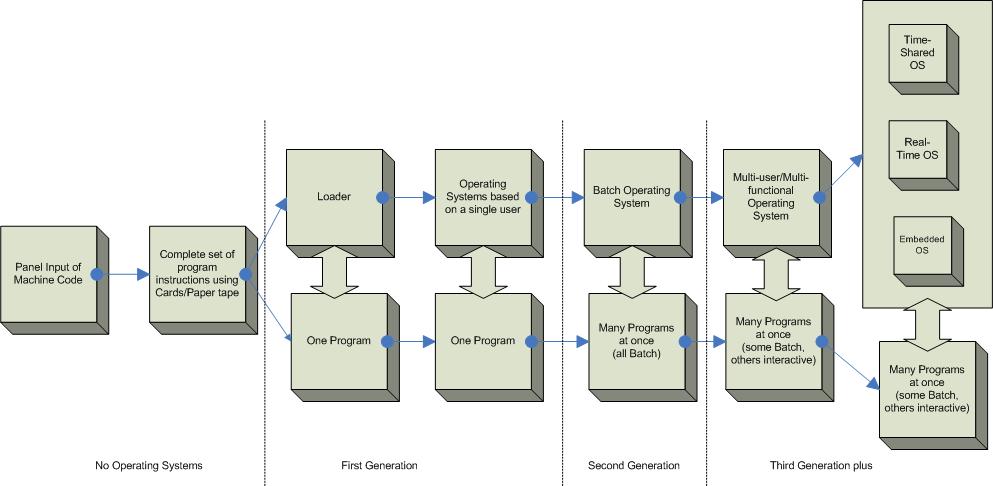The history of operating systems has been closely aligned with hardware history, until relatively recently with the proliferation of hypervisors and virtual machines. The history of operating systems includes how they have evolved to become more portable and useful. The subject ranges from mainframe operating systems such as IBM’s OS/360 to portable and influential systems such as MULTICS2 and UNIXr3 to mobile device operating systems such as Apple’s iOS and Google’s Android. The drive to make computing hardware more effective and easy to use has led to the development of features like virtual memory, multi-programming, multi-processing, and time-sharing have contributed to a set of features that we expect of almost every operating system.

Examples: